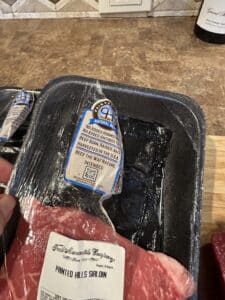When beef changes color is it bad?
On February 21, MeatsPad discussed in their podcast how American consumers’ preference for bright red beef. The podcast emphasized that the color of beef doesn’t affect its safety. Let’s unpack it further. When meat is fresh and shielded from air exposure, such as in vacuum-sealed packages, it exhibits a purple-red hue due to myoglobin, one of the primary pigments responsible for its color. Upon exposure to air, myoglobin transforms into oxymyoglobin, imparting a pleasing cherry-red color to the meat. Plastic wrap is permeable to oxygen, which aids in maintaining this vibrant red appearance. However, prolonged exposure to store lighting and continual oxygen interaction with myoglobin and oxymyoglobin result in the formation of metmyoglobin, causing the meat to adopt a brownish-red tint. This is simply a consumer perception and this alteration in color does not necessarily indicate product spoilage.
The question arose: How much meat is wasted due to its color? Dr. Ranjith Ramanathan from Oklahoma State University surveyed retailers across 40 different states, and major and small retailers, and published a report in 2022. The report highlighted the significant amount of meat wasted by retailers.
This waste poses concerns about the impact on the world food supply and the environmental consequences of meat production. Approximately 2.5% of the meat produced in the US is wasted annually, amounting to a substantial loss of 3.7 billion dollars. Specifically, 400 million pounds of beef are wasted each year.
Below is a picture of a package of steaks we bought yesterday. You can see the bright red color on the steaks, except where the label didn’t allow the oxygen to get to it. So the color didn’t “bloom” in those areas of the steak. Perfectly safe, it just looks a little strange.



The United States Department of Agriculture explains color and oxygen in beef here.




